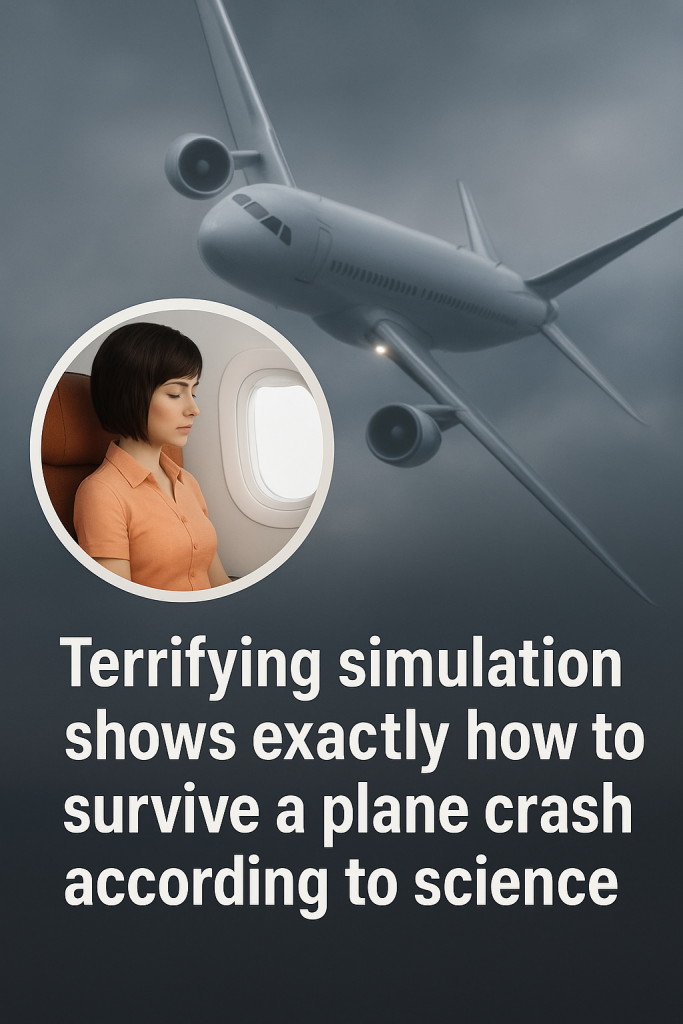In an age where air travel is commonplace, the fear of a plane crash remains a troubling, if rare, reality for many passengers. Now, groundbreaking scientific research paired with a harrowing computer simulation is shedding light on exactly what increases your chances of surviving such a catastrophic event. The findings have gone viral on social media, capturing the attention of millions eager to uncover the often-overlooked survival tactics no one talks about.
Recent studies conducted in 2024 have taken a deep dive into the physics and human factors involved in aircraft crashes. Using state-of-the-art simulation technology, researchers recreated various crash scenarios to analyze the forces, injuries, and outcomes for passengers under different circumstances. This terrifying simulation provides more than just a sobering visual—it reveals actionable science-backed strategies that may tip the odds in your favor.
The Crucial Role of Seat Position and Brace Posture
One of the most eye-opening discoveries concerns where you sit on the plane. Data from the simulation corroborate previous research suggesting that seats towards the rear of the aircraft statistically offer a higher survival rate. This is because the tail section often endures less immediate impact compared to the front, which tends to sustain the brunt of a crash. The simulation highlights that passengers seated in the last third of the plane have roughly a 40% higher chance of walking away from a severe crash unscathed.
Equally important is how you prepare for impact. The “brace position” isn out there to meet regulations; it’s a life-saving maneuver. The simulation clearly shows that adopting the correct brace position—head down, hands over your head or resting on the seat in front, feet flat on the floor—significantly reduces the likelihood of head and spinal injuries. This position helps distribute the forces of impact away from vulnerable areas of the body.
Understand Your Environment: Harnessing Cabin Safety Features
The simulation also uncovers the subtle yet critical role the airplane’s internal environment plays. Passengers who familiarize themselves with the nearest exits and cabin layout prior to takeoff have a marked advantage during evacuation. Panic often leads to disorientation, but those who quickly identify viable escape routes can evade danger faster, increasing their survival odds exponentially.
Moreover, keeping your seatbelt fastened at all times while seated proved to be an unsurprising but essential survival factor. Many injuries in crashes occur due to secondary impacts inside the cabin, so a securely fastened belt can prevent you from being thrown around during sudden turbulence or impact.
What the Viral Simulation Is Teaching the Public
Shared widely across platforms with captions such as “Terrifying simulation shows exactly how to survive a plane crash according to science,” this eye-opening visualization has ignited conversations worldwide—and not just about the risks, but practical preparedness. Viewers have been captivated by the realistic rendering of impact forces and the visible difference proper preparation makes.
This newfound awareness challenges assumptions that plane crashes are inherently unsurvivable. While a crash is undoubtedly dangerous, these scientific insights empower passengers with knowledge rather than fear. Airlines and safety experts emphasize that understanding these survival strategies and staying calm can be crucial in an emergency.
Final Takeaway
The compelling 2024 simulation and accompanying scientific studies reveal that surviving a plane crash is often about smart preparation and quick, informed action. Select your seat wisely towards the rear, always buckle your seatbelt snugly, adopt the correct brace position when directed, and keep mental notes of emergency exits. Science has indeed unveiled survival secrets that could save your life—secrets that no passenger should board a flight without knowing.



